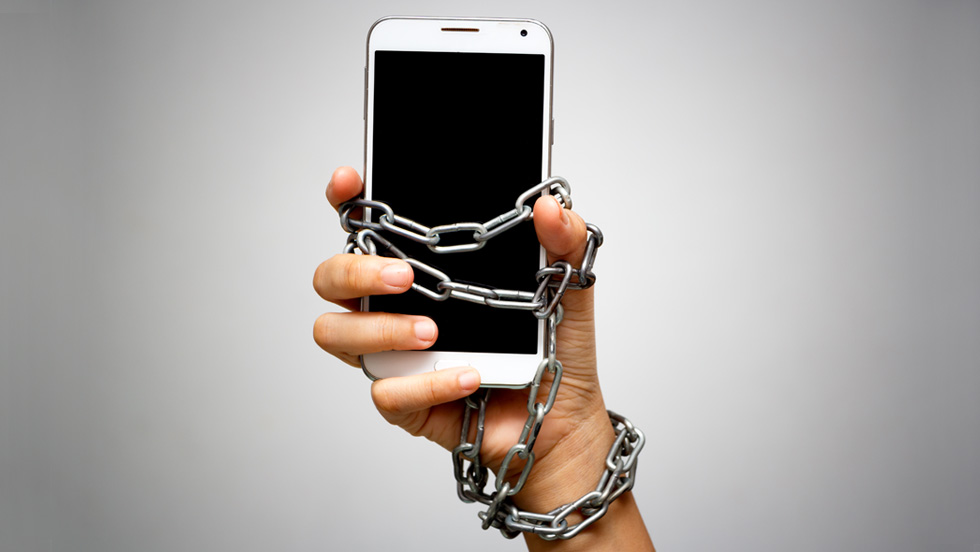
New research illuminates the patterns that drive excessive digital usage.
These days, we depend so heavily on our smartphones that they can sometimes feel like a part of us—or at least like a significant other. Robert Bornstein, PhD, University Professor in the Gordon F. Derner School of Psychology, has spent the past 40 years studying the dynamics of interpersonal dependency. He was curious about the genesis of this intense emotional bond with our devices.
While there has been no shortage of research on excessive smartphone and Social Network Sites (SNS) usage, most studies utilize an addiction model framework, which overlooks the psychological processes that actually trigger usage. Dr. Bornstein partnered with two international colleagues, Emanuela S. Gritti, PhD, of Italy’s Milano-Bicocca University, and Baptiste Barbot, PhD, of Belgium’s Université catholique de Louvain, to pilot a project that would, for the first time, evaluate usage from an interpersonal perspective. The results of their study, published as “The smartphone as a ‘significant other’: interpersonal dependency and attachment in maladaptive smartphone and social networks use” in BMC Psychology (2023),¹ reveal important links between an individual’s psychological makeup and their style of digital connection.
The authors used three key concepts, borrowed from various psychoanalytic schools of thought, to frame the study. First, they theorized, any given individual’s attachment style (such as anxious, avoidant or insecure) would likely parallel their reliance on digital devices. These attachment styles can be further shaped by other psychological factors, including interpersonal dependency—the tendency to rely on other people for nurturance, guidance and support. “We know that dependent people are anxious when they believe a close relationship is at risk, which leads them to do all kinds of things to draw the relationship in closer,” Dr. Bornstein said. “In the digital world, these behaviors can involve obsessively texting someone or monitoring their activity on social media. We call it the ‘excessive reassurance pathway.’ You send a text out, and you get one back. It’s instant relief.”
Moreover, recent evidence suggests that smartphones themselves can become an attachment target. The term “transitional object,” coined by a researcher in the 1950s to describe blankets, stuffed animals and other articles that infants turn to for comfort, can also be applied to any inanimate object that performs a transitional function in adulthood. “For people with heightened psychological vulnerability, the phone is a self-soothing tool,” Dr. Bornstein noted. “It can compensate for those feelings of abandonment or the perceived unavailability of attachment figures.”
The study’s final sample pool included 341 individuals, all based in Italy, of varying ages and genders. They were given a battery of six questionnaires to complete: the Attachment Style Questionnaire, the Relationship Profile Test, the Rosenberg Self-Esteem Scale, the Toronto Alexithymia Scale, the Young Adult Attachment to Phone Scale, and the Social Network Intensity and Social Network Access via Mobile Phone Applications.
The resulting data substantiated the authors’ theories about the relationship between attachment style and other mediators. “As expected, anxious and avoidant attachment were related consistently and coherently to all interpersonal dependency variables, as well as to emotional deficit and self-esteem with effects of moderate to large magnitude,” they write. Participants with higher levels of interpersonal dependency reported a stronger emotional bond with their smartphone and more intense usage of SNS. Participants at the other end of the dependency spectrum, however, expressed relief when their device was out of reach. “Interestingly, we found that unhealthy dependent people described their phone as a ‘refuge,’ while healthy dependent people described it as a ‘burden,'” Dr. Bornstein said.
According to the authors, these findings are not just abstract research data—they stand to substantively reshape treatment of digital addiction. If indicators of anxious attachment and/ or unhealthy interpersonal dependency are present, mental health providers can preemptively plan to address the increased risk of maladaptive smartphone and SNS usage.
“It’s hard to alter someone’s dependency levels in adulthood, but therapists can make sure patients are equipped to cope more effectively and panic less when those abandonment fears are triggered,” Dr. Bornstein said. “Now that we know what psychological processes are prompting overuse, we can help people to express dependency in less problematic, more adaptive ways. That’s where our team’s model improves on what’s already out there.”
Biography
Robert F. Bornstein, PhD

Robert F. Bornstein, PhD
Robert F. Bornstein, PhD, is University Professor in the Gordon F. Derner School of Psychology. He has published numerous articles, book chapters and books on personality dynamics, assessment, diagnosis and treatment, including Elements of Personality: Discovering Connections, published in 2024 by the American Psychological Association. Dr. Bornstein’s research is focused on personality disorders, personality assessment, unconscious processes and interpersonal dependency.
¹Gritti, E. S., Bornstein, R. F., & Barbot, B. (2023). “The smartphone as a ‘significant other’: Interpersonal dependency and attachment in maladaptive smartphone and social networks use.” BMC Psychology, 11(1). doi:10.1186/s40359-023-01339-4